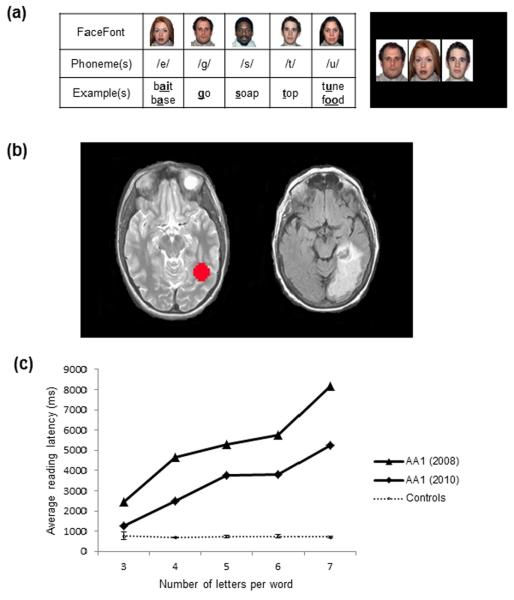Fig. 1.
Examples of FaceFont phonograms and presentation of pure alexia in AA1. (a) Left: A sample of five FaceFont phonograms, their corresponding English phonemes (represented using the International Phonetic Alphabet), and examples of the sounds in English words. Right: An example of the word `gate' shown in FaceFont. (b) Typical location of the VWFA (red sphere) on a reference brain (left image). The structural image from AA1 (acquired during her initial hospital admission) reveals damage to the left occipotemporal cortex that includes the typical VWFA territory (right image). (c) Letter-by-letter reading observed in AA1, as demonstrated by a steep, linear increase in reading latencies as words increase in length, as compared to the average reading latencies of four controls. Error bars (representing standard deviations) reflect relatively little variance amongst the control participants when contrasted with AA1's reading latencies. Note: 4.81% of all trials were excluded in which the microphone did not register the response latencies. Latencies were reported for correct pronunciations only. See Table S3 for accuracy results.

